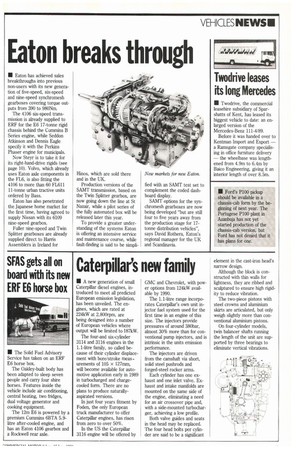Caterpillar's new family
Page 17

If you've noticed an error in this article please click here to report it so we can fix it.
• A new generation of small Caterpillar diesel engines, introduced to meet all predicted European emission legislation, has been unveiled. The engines, which are rated at 224kW at 2,800rpm, are being designed into a number of European vehicles where output will be limited to 187kW.
The four-and six-cylinder 3114 and 3116 engines in the 1.1-litre family, so called because of their cylinder displacement with bore/stroke measurements of 105 x 127mm, will become available for automotive application early in 1989 in turbocharged and chargecooled form. There are no plans to produce naturallyaspirated versions.
In just four years fitment by Foden, the only European truck manufacturer to offer Caterpillar engines, has risen from zero to over 50%.
In the US the Caterpillar 3116 engine will be offered by GMC and Chevrolet, with power options from 124kW available by 1990.
The 1.1-litre range incorporates Caterpillar's own unit injector fuel system used for the first time in an engine of this size. The injectors provide pressures of around 380bar, almost 30% more than for conventional pump injectors, and is intrinsic in the units emission performance.
The injectors are driven from the camshaft via short, solid steel pushrods and forged-steel rocker arms.
Each cylinder has one exhaust and one inlet valve. Exhaust and intake manifolds are mounted on the same side of the engine, eliminating a need for an air crossover pipe and, with a side-mounted turbocharger, achieving a low profile.
Both valve guides and seats in the head may be replaced. The four head bolts per cylinder are said to be a significant element in the cast-iron head's narrow design.
Although the block is constructed with thin walls for lightness, they are ribbed and sculptured to ensure high rigidity to reduce vibration.
The two-piece pistons with steel crowns and aluminium skirts are articulated, but only weigh slightly more than conventional aluminium pistons.
On four-cylinder models, twin balancer shafts running the length of the unit are supported by three bearings to eliminate vertical vibrations.
















































































































